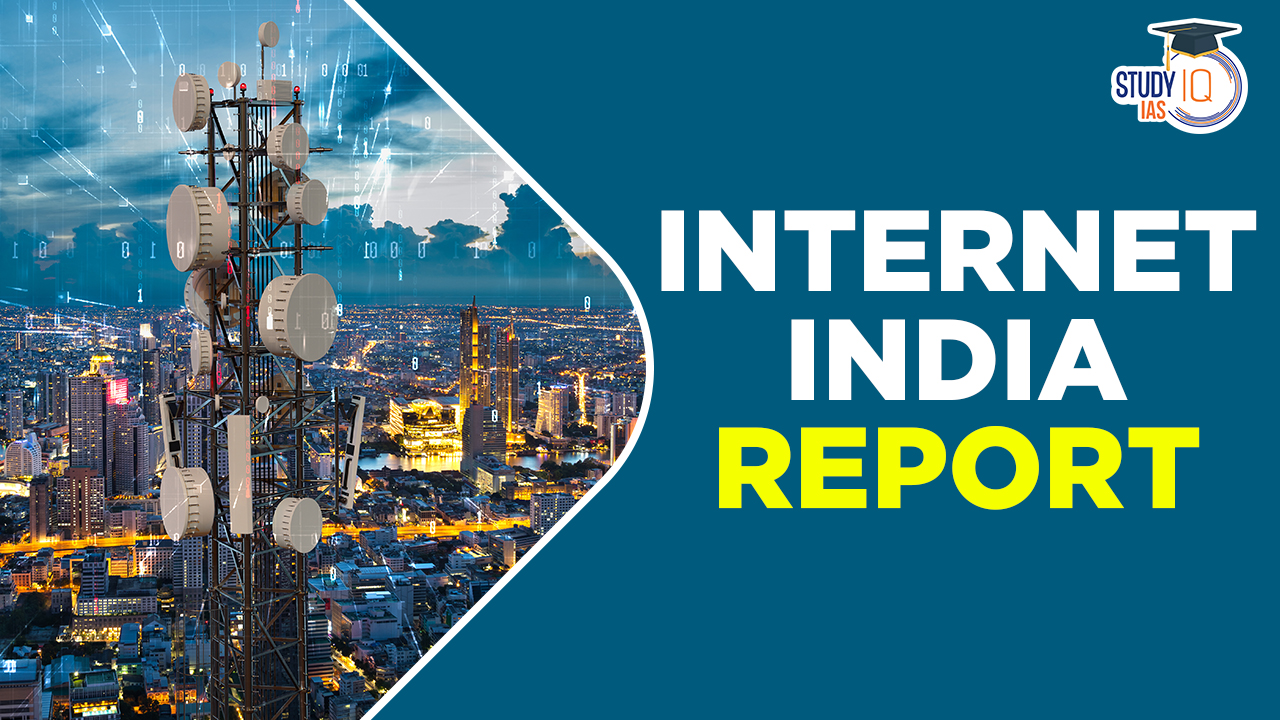Table of Contents
Context: IAMAI and market data analytics firm Kantar have brought out the Internet India Report that has captured internet usage in India.
Stats IQ: Internet use in India
| Active internet users | More than half of Indian citizens, which equals to 759 million, are active internet users and access the internet at least once a month.
This active internet base in India is expected to grow to 900 million by 2025. |
| Rural and urban distribution | Among the active internet users in the country, 399 million are from rural parts, while 360 million are from urban parts. This shows that rural India is driving internet growth.
By 2025, 56 per cent of all new internet users in India will belong to rural India. |
| Regional divide | Digital divide, because of disparity in penetration, has been the major impediment in internet growth in some major states.
32% of users in Bihar have less than half the level of internet penetration compared to the leading state Goa where 70% people are internet users. |
| Gender-wise growth | Even though 54% of internet users are male, 57 per cent of all new users of internet in 2022 were females.
By 2025, it is estimated that 65 per cent of all new internet users will be women. |
| Popular internet services | Digital entertainment, digital communications and social media are the most popular internet-based services in India.
There is a 51 per cent year-over-year (YoY) growth in social commerce, indicating the increase in social media use. |
| Digital payments | Digital payments have seen 13% growth over 2021 to reach an estimated 338 million users. Out of these, 36% are from rural India. |
What is Internet?
- Internet is the global interconnected network of computers that uses the Internet protocol suite (TCP/IP) to communicate between networks and devices.
- Origin:
- The origins of the Internet can be traced to the development of packet switching and research initiated by the United States Department of Defense in the late 1960s to enable time-sharing of computers.
- ARPANET, which was the primary precursor network, allowed interconnection of regional academic and military networks to enable resource sharing.
- The transition to the modern Internet began after the linking of commercial networks and enterprises in the 1990s.
Working of Internet
Importance of Internet:
- Information dissemination: Internet is a medium of sharing information to the whole world. A person from any part of the world can access information on the internet.
- Development of business: The growth of e-commerce has helped many sellers to grow their business and expand their customer base beyond local area.
- Education: Internet technology has removed the distance barrier for learning. People in one part of the world can enroll in courses offered in another part of the world.
- Real-time communication: Internet has made it possible to communicate with each other on a real-time basis.
- Remote working: Employees can work in companies across the world without physically being on the location. This has been made possible by internet technology.
- Governance: Digital governance will allow citizens to avail government facilities or relay their concerns without having to visit offices. This is another important outcome of internet technology.
- Financial actions: Share market trading, banking activities and other financial activities can be undertaken through internet-based services.

Challenges to Internet Technology
- Vulnerable to hacking: Interconnectedness between computers makes these devices vulnerable to hacking. This may affect the performance and also the privacy of the user.
- Creation of infrastructure: Mobile towers, optical cable networks or satellite-related infrastructure needs to be in place for working of internet. Setting them up in inaccessible areas would be challenging.
- Requires digital skills: Navigating internet needs certain amount of digital knowledge. Without this basic knowledge, internet services cannot be accessed.
- Restricted access: Access to internet is not absolute. The government and internet companies can restrict users’ access to sites.
- Security threats: Internet has become a platform for people trying to create unrest in the society. It gives them the required knowledge and helps them coordinate their attacks.
Internet Regulation in India
- Information Technology Act, 2000:
- The law gives legal sanction to electronic commerce and electronic transactions, enabling e-governance, and prevents cybercrime.
- The law has provisions for penalties for various cybercrimes and fraud through digital/electronic format.
- Information Technology (amendment) Act, 2008:
- The act introduced Section 66A, which gave power to the authorities to arrest anyone accused of posting ‘offensive’ content on social media.
- Section 69A allows government of India to intercept, monitor or decrypt any information generated, transmitted, received or stored in any computer resource under certain circumstances.
- The section empowers the government of India to block internet sites in the interests of the nation. It also includes banning certain apps.
- Information Technology Intermediary Guidelines (Amendment) Rules, 2018:
- Under Section 79(2)(c), intermediaries are required observe due diligence while discharging their duties, and also follow prescribed guidelines of the Indian Government.
- In case the government seeks information or assistance concerning cybersecurity, then the intermediaries must provide them the same within 72 hours.
- Intermediaries are required to remove access to unlawful content within 24 hours.
Way Forward
- Multi-stakeholder approach: The present multi-take holder approach must be preserved, and efforts should be made to involve civil society actively in governance and decision making.
- Dual edged sword: Like every other technology, internet has dual use. It can be used for both the welfare of society and causing its disruption.
- Therefore, there is a need to develop guidelines that will help in reaping benefits while keeping threats under check


 Daily Quiz 01 July 2025
Daily Quiz 01 July 2025
 China, Pakistan and Bangladesh Trilatera...
China, Pakistan and Bangladesh Trilatera...
 US Pulls Funding from GAVI-Global Vaccin...
US Pulls Funding from GAVI-Global Vaccin...





















